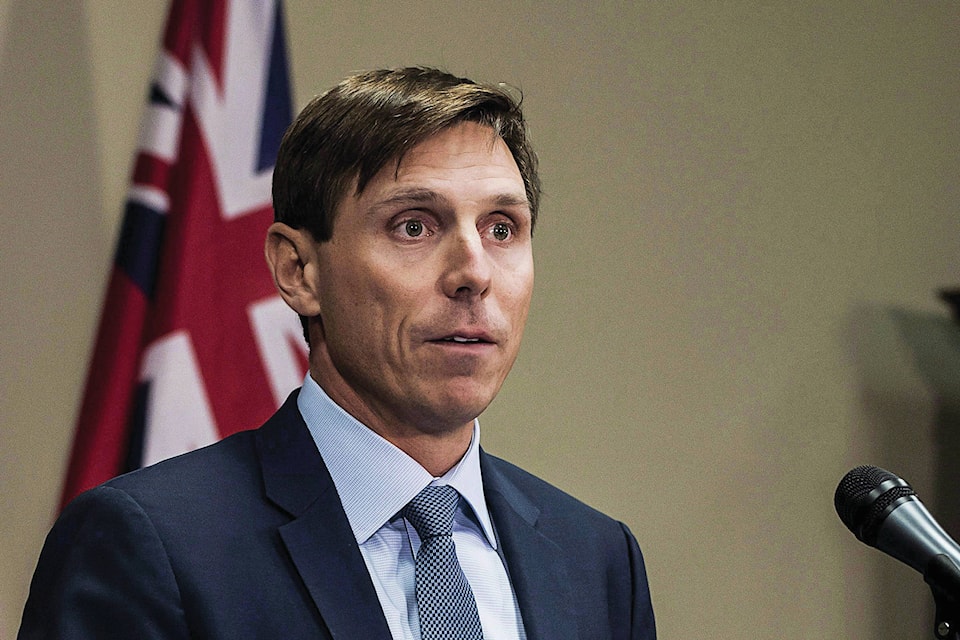Patrick Brown is expected to find out Wednesday whether he will be able to continue his bid to lead Ontario’s Progressive Conservatives through the spring election.
The former Opposition leader, who was forced to resign last month amid sexual misconduct allegations, is fighting an uphill battle to reclaim his job, which has pitted him against the party brass.
A party nomination committee was expected to meet with Brown late Tuesday before deciding if the 39-year-old politician should be allowed to run as a Tory candidate in the June election. A decision against him would derail his efforts to reclaim the Tory leadership.
RELATED: Patrick Brown enters Ontario Tory leadership race
But despite the obstacles, Brown remained defiant Tuesday, promising to continue his fight.
“We have an obligation to the people of Ontario to get our province back on course,” he wrote in a message posted on Facebook — his preferred method of communication since stepping down. “I want to finish the job that we started.”
Three other candidates vying for Brown’s former job — Christine Elliott, Doug Ford and Tanya Granic Allen — will also be interviewed by the committee as part of a vetting process that will also look at their social media posts, previous jobs and criminal history. Caroline Mulroney, who is running in the York-Simcoe riding, is the only vetted candidate seeking the party’s top post.
Interim Tory leader Vic Fedeli, who has vowed to clean up the party and “root out the rot,” refrained Tuesday from commenting on whether Brown should be pushed out of the leadership race.
“I trust the process,” he said. “Patrick, like every candidate, will have to go through the provincial nominating committee.”
Sources say the leadership process involves filing the appropriate paperwork to register, paying $125,000 in different fees, and then going through the vetting process. Sitting legislators are not subject to the vetting process, but that rule does not apply to Brown, who was removed from the Tory caucus on Friday.
RELATED: Patrick Brown sister says he was the victim of a ‘political hit’
Some Tory officials acknowledged the complicated vetting process has caused some confusion inside and outside the party.
“We are navigating difficult waters,” one official said. “It might be foreign to outsiders but we’ll come out of this with a new leader and an energized party.”
Tory members will vote online for a new leader on March 2 and March 8, with the winner to be announced on March 10.
Brown’s abrupt resignation plunged the Progressive Conservatives, who had been leading in the polls, into turmoil, triggering the kind of infighting rarely seen in Ontario politics.
On Tuesday, Brown warned his supporters to brace for more attacks, saying a small group of party “insiders” were trying to derail his leadership bid.
“Over the next weeks you may hear or see stories questioning my integrity, character and my leadership of our party,” Brown wrote. “This small group of insiders will stop at nothing in their attempts to derail us.”
Brown denied a Globe and Mail report that said he had discussed a $375,000 business deal with a man who would later become a Tory candidate in Brampton, Ont. The Canadian Press has not independently verified the allegations.
RELATED: Conservative candidates facing sex assault allegations won’t be allowed to run
Brown said the deal never happened and accused a former senior staffer of leaking personal and financial information to the media.
“This includes bank statements, mortgage information, legal documents, all of which is legally protected and personal information,” he said.
Brown also pushed back against accusations that he inflated party membership numbers. Brown often took credit for growing the party from about 12,000 members after the Tory defeat in the 2014 election to 200,000 in late November. An internal audit ordered by Fedeli following Brown’s resignation found 133,000 members.
The membership numbers were accurate at the time he made the statement to the media, Brown said Tuesday.
“There is one person at party headquarters who looks after every single membership form and verifies the payment,” he said on Facebook. ”He should be allowed to speak but won’t be allowed to because he will speak the truth.”
In the coming days, Brown will also have to deal with a complaint filed with Ontario’s Integrity Commissioner alleging he is not fit to be a legislator, much less party leader or the premier of the province.
Tory legislator Rick Hillier, who filed the complaint, alleged Brown had violated the Members Integrity Act, which governs the conduct of members of the legislature, and asked the commissioner to investigate Brown’s financial declarations, his travels to India and what he called ”unreported income allegedly related to nomination acclamations.”
As the Tory drama has unfolded over the last few weeks, the governing Liberals have been reluctant to publicly weigh in, while the New Democrats said it’s hard to predict what will come out of it.
“I don’t know what the end result will be in terms of all of this mess but it’s certainly garnering a lot of attention,” said NDP Leader Andrea Horwath. ”But I have to say, just because people are paying attention to the Conservatives during this messy process doesn’t mean they like what they see.”
— with files from Paola Loriggio and Nicole Thompson.
Shawn Jeffords , The Canadian Press
